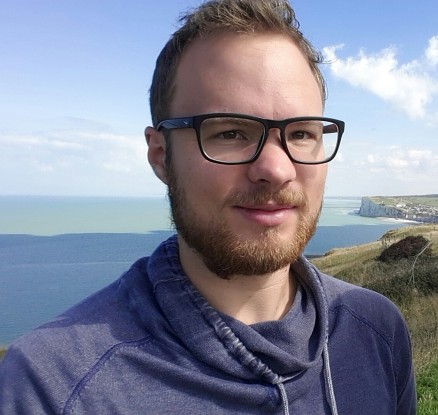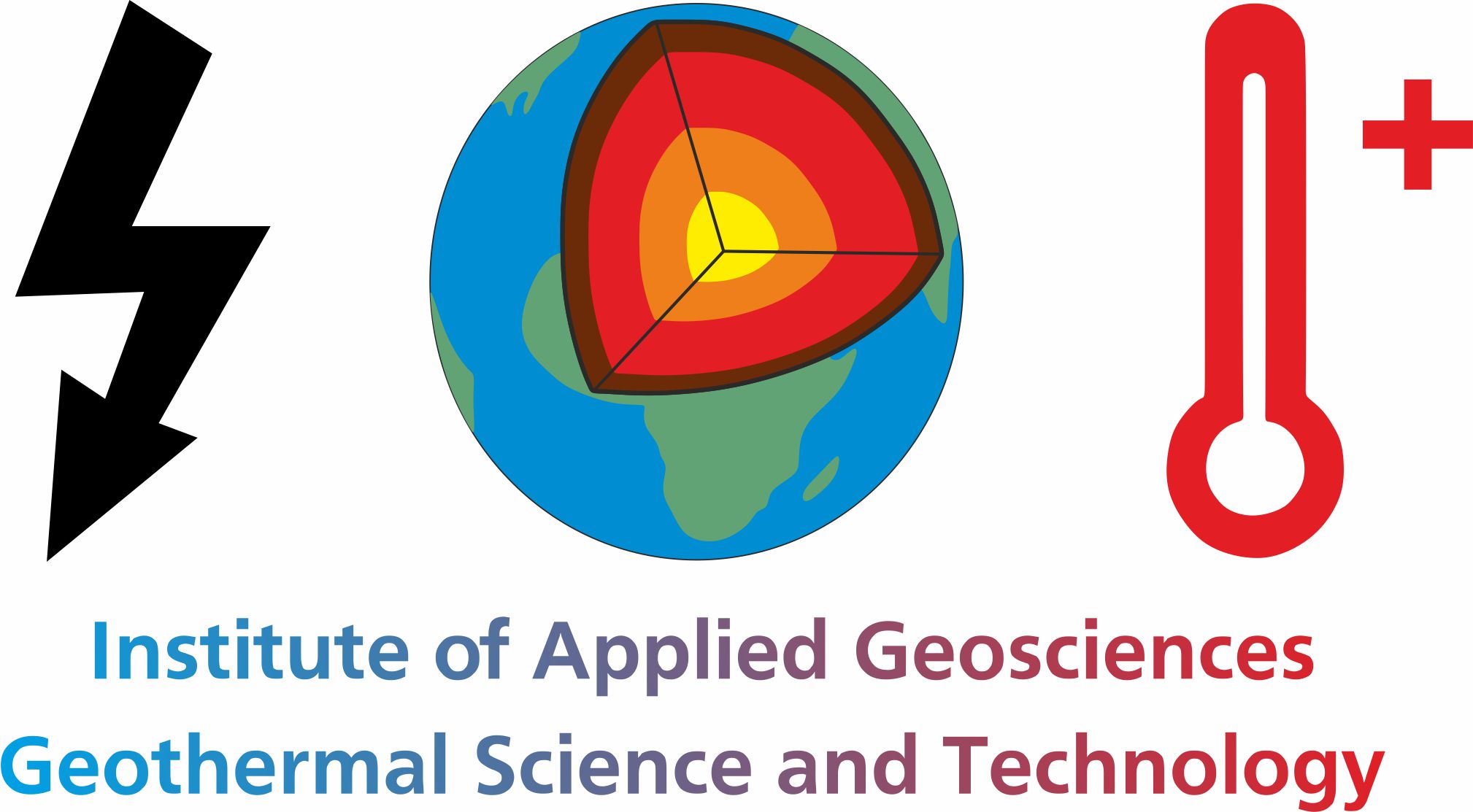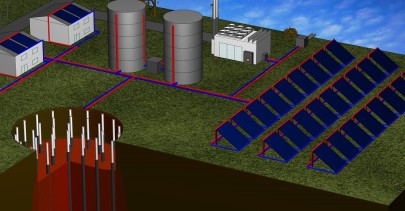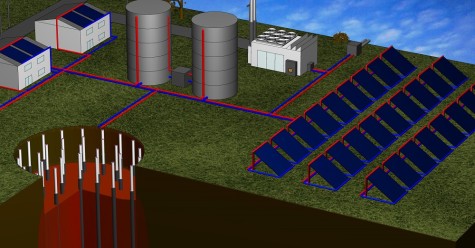The promotion of renewable energy has been mainly focused on the electricity sector so far. However, exceeding 50%, heating accounts for the largest share of the energy consumption in industrialized countries like Germany. Hence, the target of decreasing the greenhouse gas emissions of the EU member states by 80% compared to the level of 1990 will be missed, if the decarbonization is not extended to the heating sector. Among others, solar energy is the most obvious renewable heat source, which can replace fossil fuels for heating purposes. Yet, seasonality results in a mismatch of solar energy supply and heat demand. Therefore, technologies are required that are capable of storing large amounts of heat over long time periods.
Arrays of borehole heat exchangers (BHE), which act as medium deep borehole thermal energy storage (BTES) systems, can be a solution for this problem. They are especially suitable for the seasonal storage of solar heat or waste heat on a high temperature level and can be integrated into district heating grids. A priory numerical simulations are imperative for planning and designing such BTES systems. The Chair of Geothermal Science and Technology employs dual continuum models (BASIMO, FEFLOW) for this task: a numerical model for the subsurface heat transport is coupled with an analytical solution of BHEs’ thermal interaction. This allows for an efficient modeling of BHE under consideration of high physical detail. In combination with mathematical optimization algorithms it is possible to determine various parameters in an iterative procedure for an ideal system design.
The dynamic interaction between BTES systems and downstream heating facilities has a significant impact on the overall efficiency. Thus, the department’s research also develops comprehensive simulation models, which include all relevant system components. The BTES and heating system are modeled specialized software tools, respectively. Simultaneous computation and continuous exchange of key parameters results in a coupled simulation and facilitates reciprocal interactions between the systems. This approach allows for the assessment of various system architectures, size ratios and control strategies and their impact on the energetic system efficiency, the economic viability and the environment.
Further Information
- BASIMO – Borehole Heat Exchanger Array Simulation and Optimization (opens in new tab)
- Optimization of Borehole Thermal Energy Storage System Design using Comprehensive Coupled Simulation Models (opens in new tab)
- Thermal Impact of Medium Deep Borehole Thermal Energy Storage on the Shallow Subsurface (opens in new tab)
- Gekoppelte Simulation von Erdsonden-Wärmespeichern und solar unterstützten Nahwärmenetzen (opens in new tab)
Contact
| Name | Contact | |
|---|---|---|

Picture: Hung Pham
| Dr.-Ing. Hung Pham | pham@geo.tu-... +49 6151 16-22294 B2|02 134 |

| Max Ohagen M. Sc. | ohagen@geo.tu-... +49 6151 16-25742 B2|02 129 |

| Matthias Krusemark M. Sc. | krusemark@geo.tu-... +49 6151 16-21806 L6|01 13 |

Picture: Lukas Seib
| Lukas Seib M. Sc. | lukas.seib@tu-... +49 6151 16-25675 L6|01 13 |




